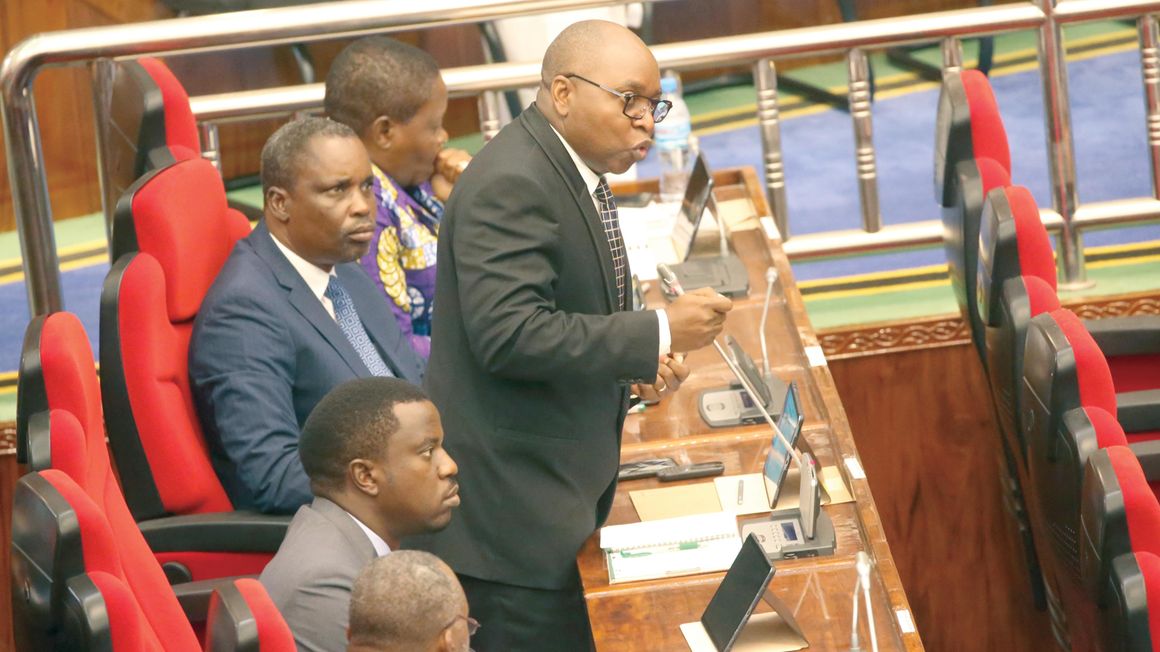
The minister for Natural Resources and Tourism, Dr Damas Ndumaro, speaks in Parliament in Dodoma yesterday. PHOTO | JONATHAN MUSSA
Dar es Salaam. The government yesterday explained why it increased entry fees to four national parks, responding to an uproar against the hike from tour operators and legislators. Starting July 1, 2021, the entry fees to Serengeti, Lake Manyara, Tarangire and Arusha national parks located in the Northern Tourist Circuit will rise from the current $60 to $70 during the ‘high tourism season,’ and remain at the current rate during low seasons.
According to the ministry of Natural Resources and Tourism, the concession fees which are charged by the Tanzania National Parks Authority (Tanapa) to the lodges and tented camps located within the park borders will increase from $50 to $60 for Serengeti, while remaining at $40 elsewhere.
The entry fees for Serengeti will also increase from the current $60 to $70 while the fees in the other three parks will rise from $45 to $50.
The seasonal and special camping fees will increase from $50 to $60 in all the four parks.
The planned changes irked tour operators and lodge owners who argue that the fees will make Tanzania safaris more expensive - and, ultimately, prompt cancellations of current bookings.
Their voices were echoed by Arusha MP Mrisho Gambo (CCM) who asked why the government was not considering to halt the new fees to stimulate growth of the tourism sector which was already hit hard by the Covid-19 pandemic.
Mr Gambo - who previously worked as the regional commissioner in the safari city of Arusha - cited examples of neighbouring countries like Kenya and Rwanda which had reduced their park fees following the pandemic.
“Covid-19 has reduced the number of international visitors to Tanzania… Why can’t the government see that - and respond like other neighbouring countries?” he questioned.
However, in responding to the question which the Speaker of the National Assembly Job Ndugai described as “very crucial,” the minister for Natural Resources and Tourism, Mary Masanja, said Covid-19 should not be an excuse to deny government revenue.
“Despite the fact that the private sector has been pushing for reducing the fees, it has never submitted to the government any statistics showing the increasing cancellations due to the change of fees,” she said.
She said the tour operators have not disclosed what they charge on their tourism packages but they had clues that the fees were “very little.”
She said the operators charge up to $2,500 per package per person visiting Serengeti, Ngorongoro, Arusha and Manyara for five days while the combined fees were $172.
Her response was cemented by the tourism minister Dr Damas Ndumbaro who said the local destinations were incomparable with others in the East African region.
“The new fees apply during high season alone and that is to balance the visits during the two seasons. For instance, during high season, about 400 vans enter Ngorongoro per day while only 70 vehicles are recorded during low season. We now want to push more people to low season as a way to preserving the ecology in the area,” said Dr Ndumbaro.
Even after the ministers’ responses, Mr Gambo appeared not satisfied - with the Speaker encouraging him to go ahead with the agenda.
“Mr Gambo, you still have more forums to build your case. We are yet to debate the development plans as well as the government budget where you can still rise the issue,” said Mr Ndugai.
“It doesn’t make sense to increase the fees when the graph of visitors is falling,” added Mr Ndugai.
Tourism was once Tanzania’s leading foreign exchange earner which generated about $2.6 billion in 2019. However, due to the impact of the Covid-19 that disrupted economic activities and cause travel restrictions, Tanzania’s tourism earning dropped to $1.06 billion in 2020, according to the Bank of Tanzania.
The number of international tourist arrivals also declined to 616,491 from the 1,527,230 tourist arrivals recorded in the year that ended on December 31, 2019, the central bank adds.





No comments :
Post a Comment